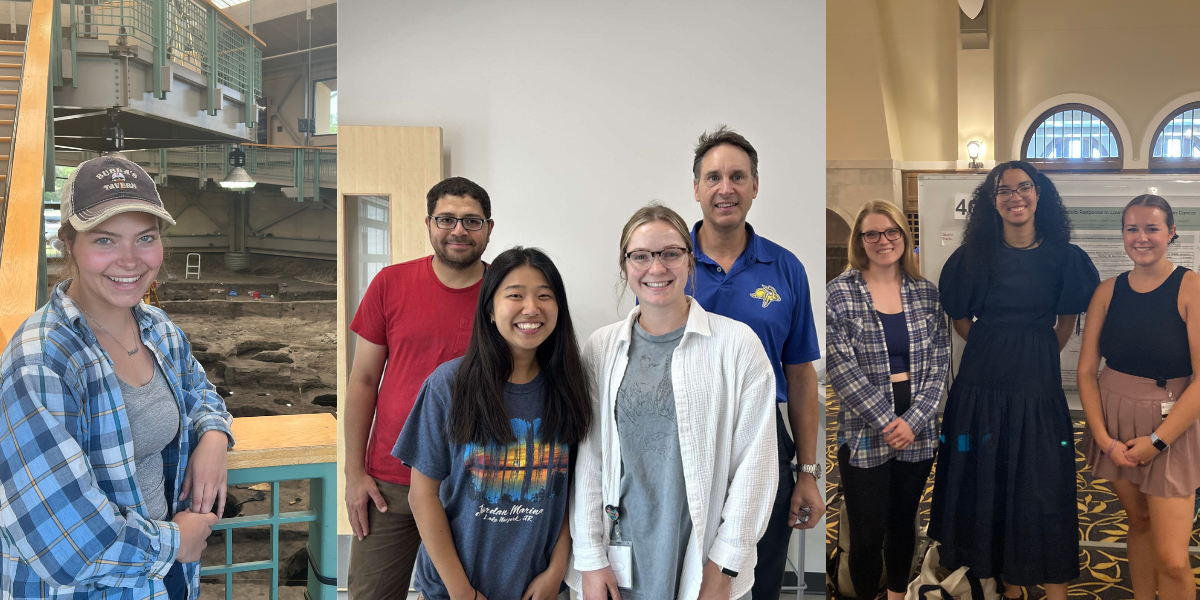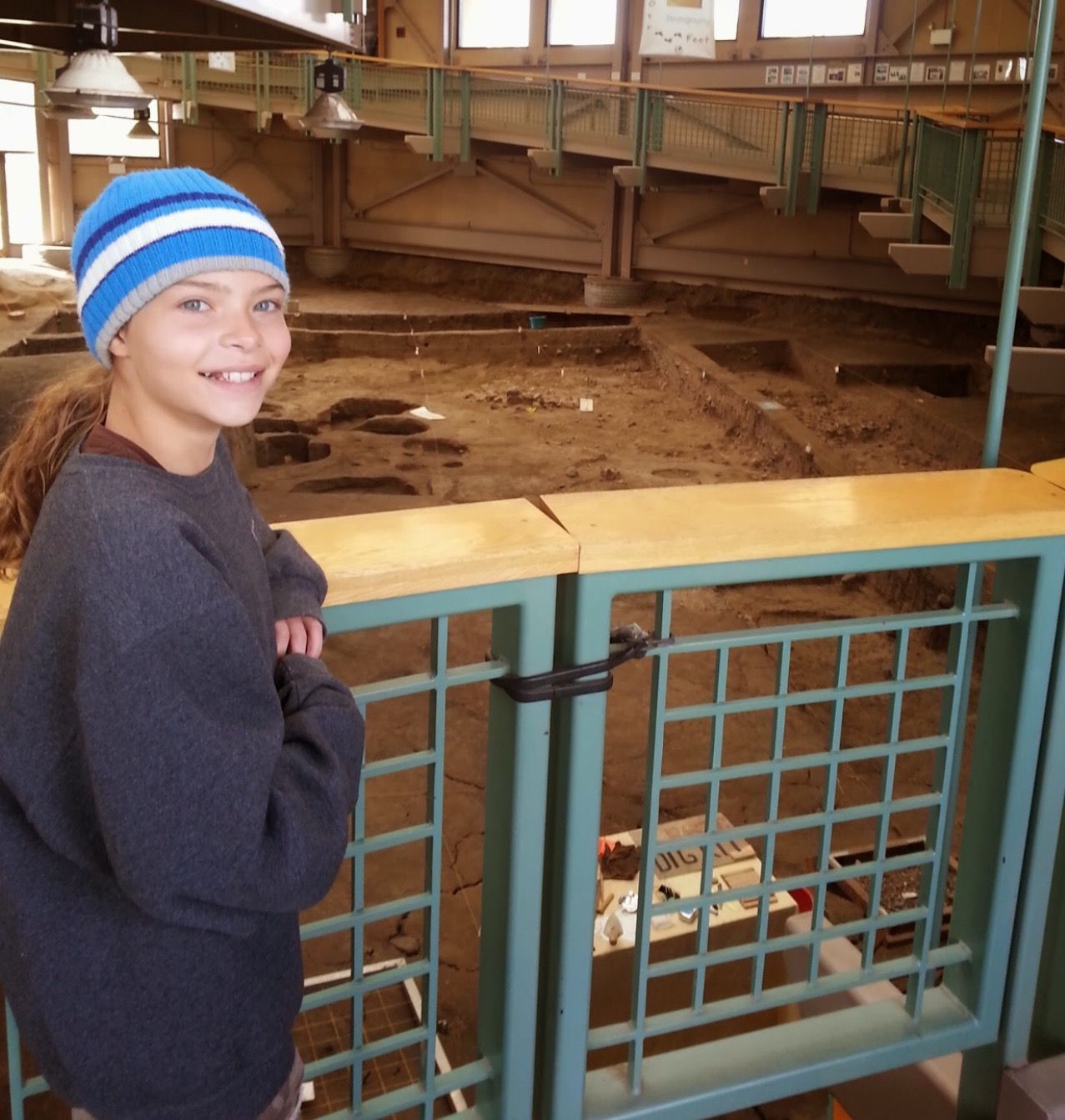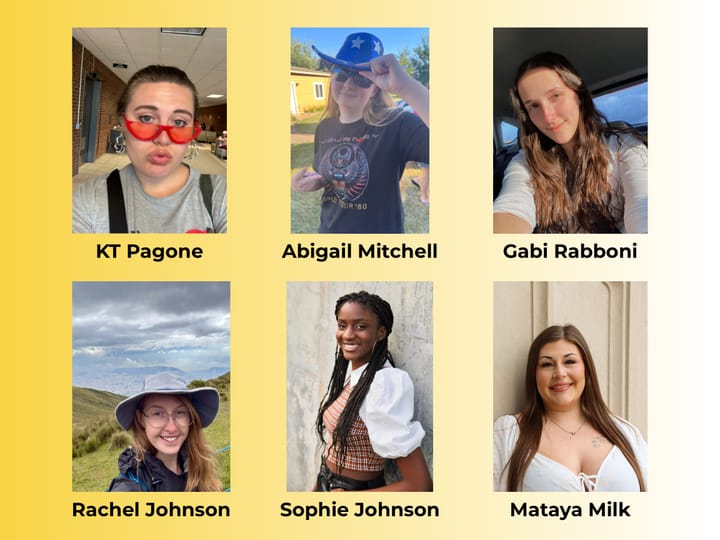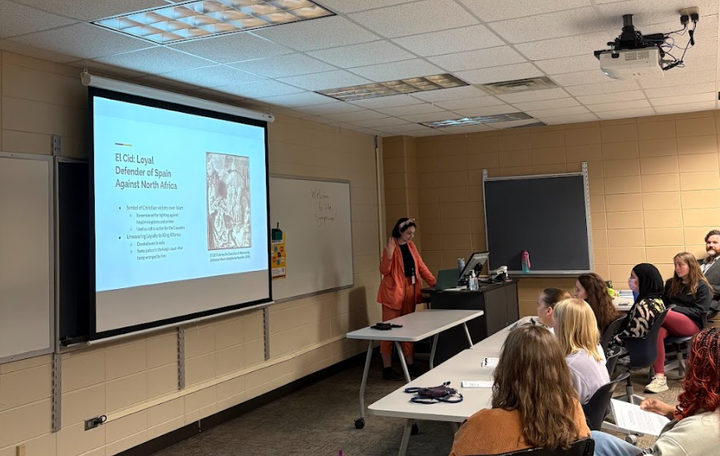Students learn from summer research, internships

Internships and research projects provide students with hands-on experience and a safe space to learn from their mistakes now and become experts in their field later.
“Internships are important for students because they give them the chance to apply concepts they've learned in coursework to a real world work environment. They also provide an opportunity to explore careers and companies that they are interested in,” Mary Toso, the director of the Student Success Center, said.
Over the summer, a number of Augustana students participated in internships and research programs to learn more about their area of study and explore what it means to be a professional in their fields.
Tori Brandt: Collections manager and field supervisor
Senior Tori Brandt is an anthropology and history major with minors in chemistry, Spanish and northern plains studies. She spent this past summer at the Mitchell Prehistoric Indian Village, organizing collections and helping other students with their field studies.
What interested you the most about this field and role for the summer?
“I was at this same site when I was 8-years-old and it was my first exposure to archeology at this site. I later found out that Augustana ran the site and it played a large factor in me being a student here.”

What tasks did you do day-to-day?
“It was different a lot of days. It’s been an established site for decades and this summer was the 20th year the site has had students excavating so the collections and artifacts are becoming larger.”
“Initially, I started off managing the collections and organizing everything that we had in our new storage unit and the older artifacts in our basement by unit and the year it was found. This organization took about five weeks. After that, I did other field work tasks and helped other students with their own day-to-day tasks. There were 12 students from the University of Exeter and one other from Augustana learning archeology.”
What was your favorite find?
“I have several. A thunderbird effigy that was made out of shell was found and this type of effigy was never found at the site before. We also found three separate pieces of carved bones and I got to pull the first one. I was able to figure out one of the designs based on our findings of the bone because one of the pieces comes to a point and it’s a well known design of that time period of a snake. There was only one other carved bone, but we have no idea what it exactly is.”
What type of experience did you gain?
“It’s a different culture and time period than the one I worked on in my own field school. Also, working with a whole other country’s worth of people and seeing how their archeology is different from our archeology. Over in England, archeology is a separate field completely from anthropology, whereas here archeology is a subfield of anthropology. It’s little differences but also large differences.”
Grace Park: Research on antibiotics
Junior Grace Park is a biology major with a minor in neuroscience. She spent her summer at South Dakota State University completing research on various antibiotics under SDSU assistant professor Sunil Mor and research associate Steven Lawson.
What did your day-to-day look like in the lab?
“Since there were so many projects going on, it was different everyday. For the first couple weeks, I worked on protein assay and quantification… We would come to the lab and set up our pipettes [and] plates and prepare our enzymes. That was for the first few weeks and for the other weeks we worked on other projects with animal cells and how it related to immunofluorescent techniques.”
How does this research influence your career path?
“I’m on the pre-med track, and I want to go to medical school, so being in the lab and learning how cells grow and [the impacts viruses have on cells], and doing the experiments with different professors, with lab partners or by myself, [has helped] me understand how everything works. It helped me understand a lot about biochemistry too, which is a class I will be taking soon.”
What was your favorite part?
“Working with the professors and my lab partners. Most of the lab partners that I had were graduate students and they have this knowledge because they already have taken these classes. They were so nice to teach me, and whenever we did projects together, they were very uplifting and assuring of the work we did and accomplished.”
What type of advice would you give to other students following a similar career path?
“Look out for those opportunities. One thing I realized when I came to college is that if you don’t speak up for yourself you can't get those opportunities, whether that’s research, internships or even starting an organization. Try to reach out to as many people as possible with your ideas and put yourself out there to experience as much as possible. It took me a couple of months to find this research project, but once I put myself out there, I learned so much from this research.”
Schaler Starks: Cancer cell research
Junior Schaler Starks is a biology, math and computer science major. Over the summer, she completed cancer cell research at the University of Iowa under Carver College of Medicine anatomy and cell biology professor Adam Dupuy.
What type of research were you involved in?
“I had two projects over the summer. Both of them are related to drug and cancer treatment. The first one was a melanoma project which was in its earliest stage of research and was a cell thermal shift assay. This was used to analyze when a protein would degrade and test for drug binding of a specific cancer drug.”
“The second project was conducted by Sarina Murray on uveal cancer, which is a rare cancer of the eye. I was involved with watching her create her final paper for her research and helping with bioinformatics.”
How does this research affect your career goal?
“Talking and meeting with [Dupuy] is so important because I also want to be a lab director. I want to be in charge of helping other people achieve their graduate dreams and help them understand how the research process works.”
What is your favorite part of research?
“I’m not being ironic at all. My favorite part is the process. I’m in bioinformatics and, for me, that is a lot of error messages and googling things and I really appreciate having the ability to research other scientists and understand where my mistakes are and helping others understand their errors too. It really felt like I was able to contribute something beyond writing up a poster at the end of the summer.”
What type of advice would you give to other students following the same career path?
“Be willing to make yourself uncomfortable. Know where your boundaries are and be able to stand for them but also, sometimes, when you’re uncomfortable, you can find what you can truly enjoy. Find your boundaries and push them.”



